How to feed roses in August?

Anyone who grows roses in the garden knows perfectly well that these are beautiful but demanding plants. It is difficult to achieve lush color from these flowers without applying the necessary fertilizers.
The need for feeding
Roses grow fast, so they need a lot of nutrients. Those contained in the soil are enough only for a while, and when they are depleted, the plants begin to starve, this manifests itself in different ways, in particular: weak flowering, pale leaves. Before applying any fertilizers, it is necessary to conduct a chemical analysis of the soil. Thus, you can find out which elements are missing in the colors.
It is especially important to carry out such a study when using mineral fertilizing, since soil analysis allows you to find out the correct dose of fertilizer applied. Fertilizing roses begins only in the second year after planting, so that the plant has time to acclimatize in a new place.
Fertilizers are applied in early summer, after flowering. It will be possible to feed the roses in August.
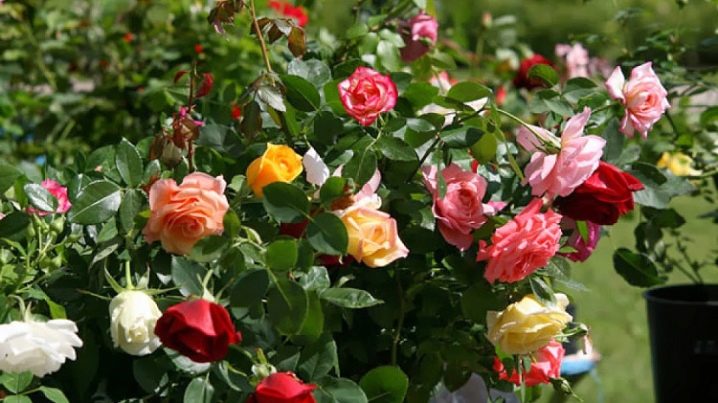
Mineral dressing
If it turns out that there is not enough fertilizing for the plants, you need to use mineral products. There are 3 things to keep in mind when using them:
- preparations containing chlorides should be avoided;
- feeding with nitrogen fertilizers must be completed in mid-July;
- you must always follow the manufacturer's recommendations on the packaging of the drug.
Mineral fertilizers are applied, as a rule, 2 times a season:
- in early spring;
- after the first flowering (June).
The mineral complex is given to the plants in 2 doses, each about 60 g per 1 m2. You can choose specialized mixtures for roses that have a balanced composition. Slow release blends are the best option as they will provide the roses with the micronutrients and macronutrients they need for several months. It is enough to apply them 1 or 2 times per season.
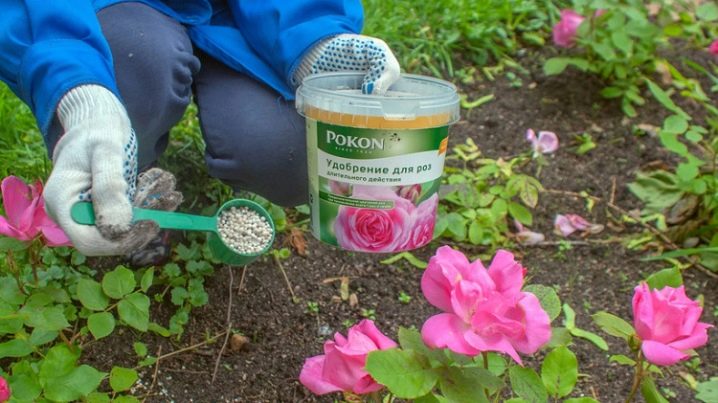
Organic fertilizers
To feed roses, you can use manure or compost, as well as vermicompost. Manure is an excellent organic fertilizer, but it must be rotted. This process usually takes at least six months. Fresh can burn the roots of plants. This top dressing can be applied once a season (in spring - in March or in autumn - in October - November). Apply to the surface or mix with the topsoil. If manure is used as a fertilizer, roses do not need mineral complexes, because the components contained in it are quite enough for the flowers. Compost is the source of easily digestible nutrients.
In terms of the amount of minerals, it is weaker than manure, so you can use it 2 or more times per season and even lay it around flowers for the winter. There are other organic fertilizers that growers use with great success. Roses can be watered with nettle infusion every 2-3 weeks, but only after diluting it with water in a ratio of 1:10. Vermicompost is the mildest version of organic fertilizers, so you can use it throughout the growing season, watering roses every 3-4 weeks. In the substrate in which the flowers grow, it is worth adding coffee grounds from time to time, mixing it with the top layer of soil. Rose bushes can be fertilized every 30 days with a solution of baker's yeast, which has a good effect on the growth and development of the root system. A pack of yeast is diluted in 10 liters of warm water and infused for 1 hour. This solution does not need to be diluted.

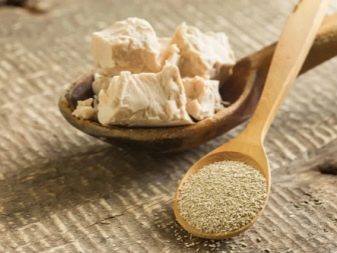
Ready funds
There are many ready-made proven products on the market that have a good effect on the growth and development of roses. Among them, there are several of the most commonly used ones.
"Azofoska"
Supplied for sale in granular form. Composition: N: P: K - (MgO + SO3) - 13.3: 6.1: 17.1 (4.5 + 21.0). It contains elements such as magnesium, sulfur and boron. This preparation also contains copper, iron, manganese and other essential elements. Chloride-free.
All macro- and microelements in a balanced ratio necessary for good growth and proper development of plants. "Azofoska" does not contain chlorides in its composition, therefore it is considered a universal top dressing, because most plants are sensitive to their increased concentration in the soil.
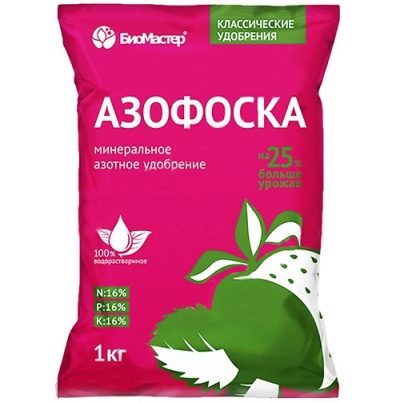
Bio gardena
Composition:
- total nitrogen (N) - 7%;
- organic nitrogen (N) - 7%;
- total phosphorus (P2O5) - 7%;
- acid-soluble phosphorus - 3.5%;
- water-soluble potassium oxide (K2O) - 7%;
- organic carbon (C) - 25%;
- organic - 43%.
An effective fertilizer for plants that prefer acidic soil.
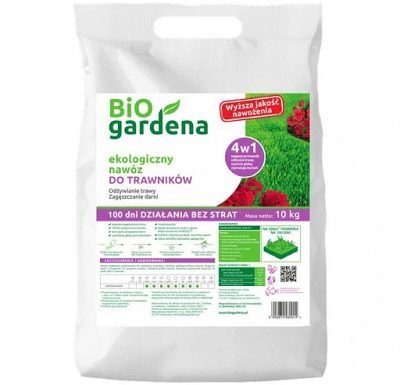
Florovit
It is a modern, ready-to-use preparation for all types of roses. A specially developed complex of components improves the vitality and endurance of plants, stimulates the root system and affects long and abundant flowering.
Regular use improves the condition of the soil and has a positive effect on the natural immunity of flowers.
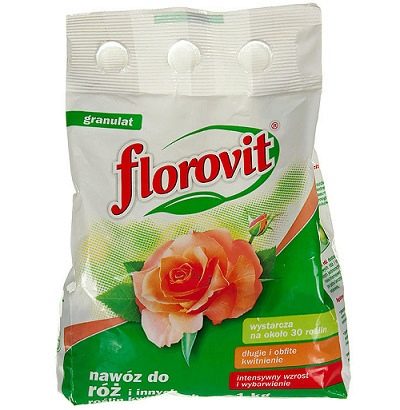
Premium Green ORO
This fertilizer is suitable for garden, flower bed, standard, climbing roses. Long-acting composition, applied once every 120-150 days. It contains all the trace elements necessary for flowers. Increases the acidity of the soil to the level required for roses.

Target
High quality multicomponent granular fertilizer used to feed any roses. With regular use, it affects the correct growth, abundant flowering, as well as the juiciness of the color. Such fertilization is necessary to strengthen the plant's immunity and increase resistance to various diseases.
Produced in granular form, it belongs to NPK type dressings. This complex contains the essential nutrients needed by flowers at every vegetative stage. It is not only nitrogen and phosphorus, but also elements such as potassium, magnesium and sulfur. It contains a sufficient amount of trace elements important for roses, including boron, copper, iron, manganese and zinc. Can be used regardless of the type of rose. The average dosage is 25 g per 1 bush.
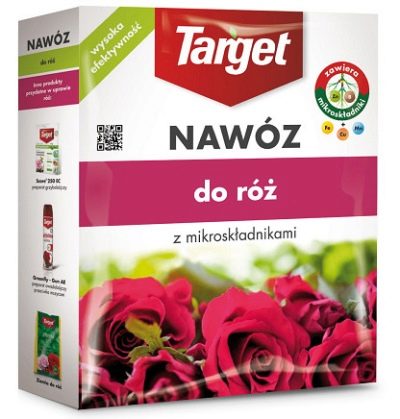
Substral
It is a top quality top dressing that dissolves easily in water. Rich in micro and macro elements, the formula is well absorbed by roses. Thanks to this feeding, roses grow healthy and strong, and also bloom profusely. The product can be used with every watering.
One package is enough to prepare up to 300 liters of fertilizer.
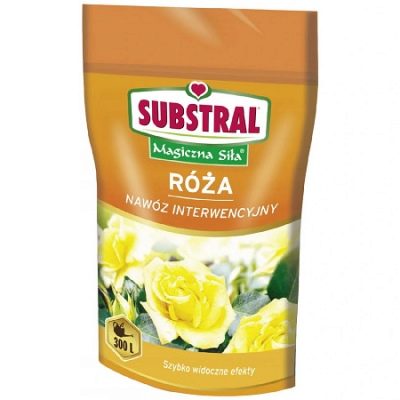

































































































The comment was sent successfully.